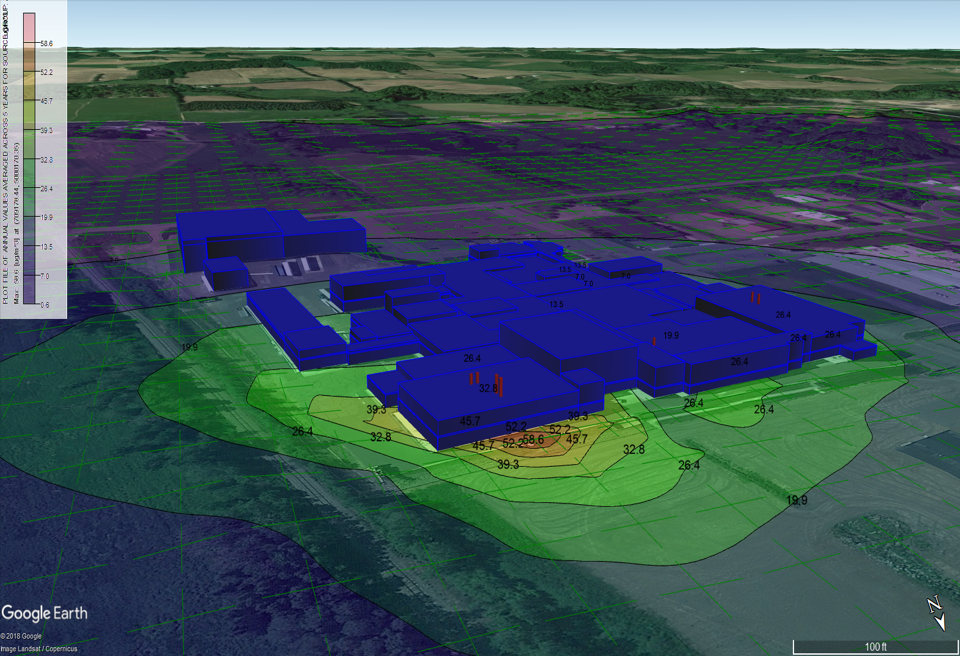Community odors are one of the top complaints to air quality regulators and government bodies across the U.S. By proactively addressing odor issues, facilities can enhance their operations and serve as responsible community members.
Unpleasant odors from certain facilities (e.g., wastewater treatment plant, landfill, factory) can significantly impact the surrounding communities. Effective odor monitoring and control strategies are key to ensure a harmonious coexistence between these facilities and local residents.

"Usually, our odor monitoring service is prompted by residents’ odor complaints that need to be addressed, but sometimes a facility is being proactive and just wants to be a good neighbor,” says air quality engineer Tom Henning. “By first acknowledging the significance of addressing odor concerns, facilities can take early measures to detect and manage odors, even before complaints arise.”
Depending on the situation, environmental scientists and engineers can assist with odor monitoring on site or establish remote systems for odor identification and tracking as needed.
Tom outlines a three-step process for detecting and managing odors.

- Sample collection: Scientists visit the facility to collect odor samples, which are carefully sealed and sent to a laboratory for analysis.
- Odor analysis: In the lab, certified odor assessors utilize an olfactometer, a device that measures the intensity of an odor or the sensitivity to an odor, to quantify and document the intensity of the odorous air samples based on human perception. This information helps to understand the characteristics of the odors and their potential impact on the surrounding environment and communities.
Related Content: The Nasal Ranger® is a field olfactometer (an odor dilution instrument) used to objectively measure and quantify odor strength in the ambient air.
- Computer modeling: Engineers then take the laboratory data and put it in a computer model to predict and visualize the dispersion of odors in the surrounding environment. The computer models take into account various factors, such as the height of the odor source (e.g., stack, basin size, or surface area), topography, and distance to receptors to determine the potential impact of the odors on nearby communities. Actual meteorological data, such as wind patterns and atmospheric conditions, are also incorporated into the models to simulate how the odors might travel and disperse over time.
 Graphic model displaying odor concentrations in a facility and the surrounding environment.
Graphic model displaying odor concentrations in a facility and the surrounding environment.
Air dispersion modeling generates visual depictions of identified odor concentrations using different colors to determine which areas in the community might be impacted. It also evaluates emissions in compliance with air quality standards at state and federal levels.

“Providing a visual picture of the odor strength is a powerful tool in determining how to address the problem,” shares Henning. “With this knowledge in hand, facilities can identify where odor control systems need to be installed and prioritize improvements as needed, addressing concerns in a targeted manner.”
Bringing it together
Once the facility identifies the odor sources causing the highest impact, they can make informed decisions about the next steps. The solution might be putting in some odor control equipment or changing certain processes at the facility so that the odors are not generated.
“These steps help prioritize what actions a facility might take to stop the odors from occurring,” says Henning. “Being able to quantify and qualify the smells in a technical manner – before they become an issue – can go a long way.”
Whether you are experiencing odor issues at your facility or just want to take proactive steps, our team of environmental engineers and scientists is here to help. Contact us to discuss your needs and explore effective odor monitoring and control solutions.
About the Expert

Tom Henning, PE*, CHMM, is a senior air quality engineer specializing in regulatory compliance, permit negotiations, and air emission control. With 35+ years of experience, he has prepared over 200 air permit applications, compliance evaluations, and air dispersion modeling analyses for facilities. As the co-chair of the Federation of Environmental Technologists (FET) Air Quality Committee, Tom leads workshops and delivers technical presentations on new Wisconsin and federal air quality regulations. He is dedicated to helping cities and businesses find solutions to odor issues impacting everyday life.
*Registered Professional Engineer in AR, IA, HI, MN, NM, NE, PA, WI

.png?width=113&name=SEH_Logo_RGB%20(1).png)
